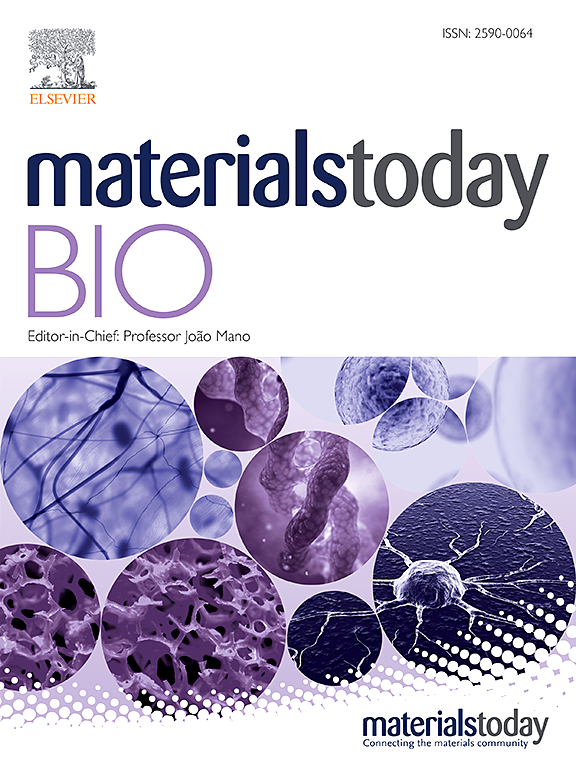Intranasal delivery of AEP inhibitor-loaded neuron-targeted liposome ameliorates radiation-induced brain injury
IF 8.7
1区 医学
Q1 ENGINEERING, BIOMEDICAL
引用次数: 0
Abstract
Acute exposure to high-dose radiation during head and neck tumors radiotherapy can result in radiation-induced brain injury (RIBI), characterized by neurocognitive deficits, dementia, and epilepsy. Asparagine endopeptidase (AEP), a cysteine proteinase, is effective in preventing neurodegenerative diseases and RIBI. However, the limited permeability of selective AEP inhibitor (AEPI) delivery to the brain reduces its effectiveness in preventing RIBI. This study constructed a nose-to-brain delivery platform for AEPI by encapsulating it in liposomes that are surface modified with rabies virus glycoprotein (RVG29), creating RVG29-AEPI liposomes. These RVG29-AEPI liposomes demonstrated efficient cellular uptake and blood-brain barrier penetration in vitro and in vivo. RVG29-AEPI liposomes effectively shielded DNA from radiation-induced damage and resulted in more effective reactive oxygen species removal than liposomes in primary neurons and microglial cells. Notably, the treatment with RVG29-AEPI liposomes (10 mg/kg AEPI) was highly systemically safe and significantly reduced brain injury. Behavioral tests demonstrated that RVG29-AEPI liposomes-treated mice had less radiation-induced brain damage and motor dysfunction. Moreover, it significantly prevented neuronal injury and microglia cell activation under photon and modern proton irradiation. These findings demonstrate the potential of nose-to-brain medication delivery of RVG29-AEPI liposomes for effective radioprotection, indicating a viable technique with enormous potential for clinical translation.

求助全文
约1分钟内获得全文
求助全文
来源期刊

Materials Today Bio
Multiple-
CiteScore
8.30
自引率
4.90%
发文量
303
审稿时长
30 days
期刊介绍:
Materials Today Bio is a multidisciplinary journal that specializes in the intersection between biology and materials science, chemistry, physics, engineering, and medicine. It covers various aspects such as the design and assembly of new structures, their interaction with biological systems, functionalization, bioimaging, therapies, and diagnostics in healthcare. The journal aims to showcase the most significant advancements and discoveries in this field. As part of the Materials Today family, Materials Today Bio provides rigorous peer review, quick decision-making, and high visibility for authors. It is indexed in Scopus, PubMed Central, Emerging Sources, Citation Index (ESCI), and Directory of Open Access Journals (DOAJ).
 求助内容:
求助内容: 应助结果提醒方式:
应助结果提醒方式:


